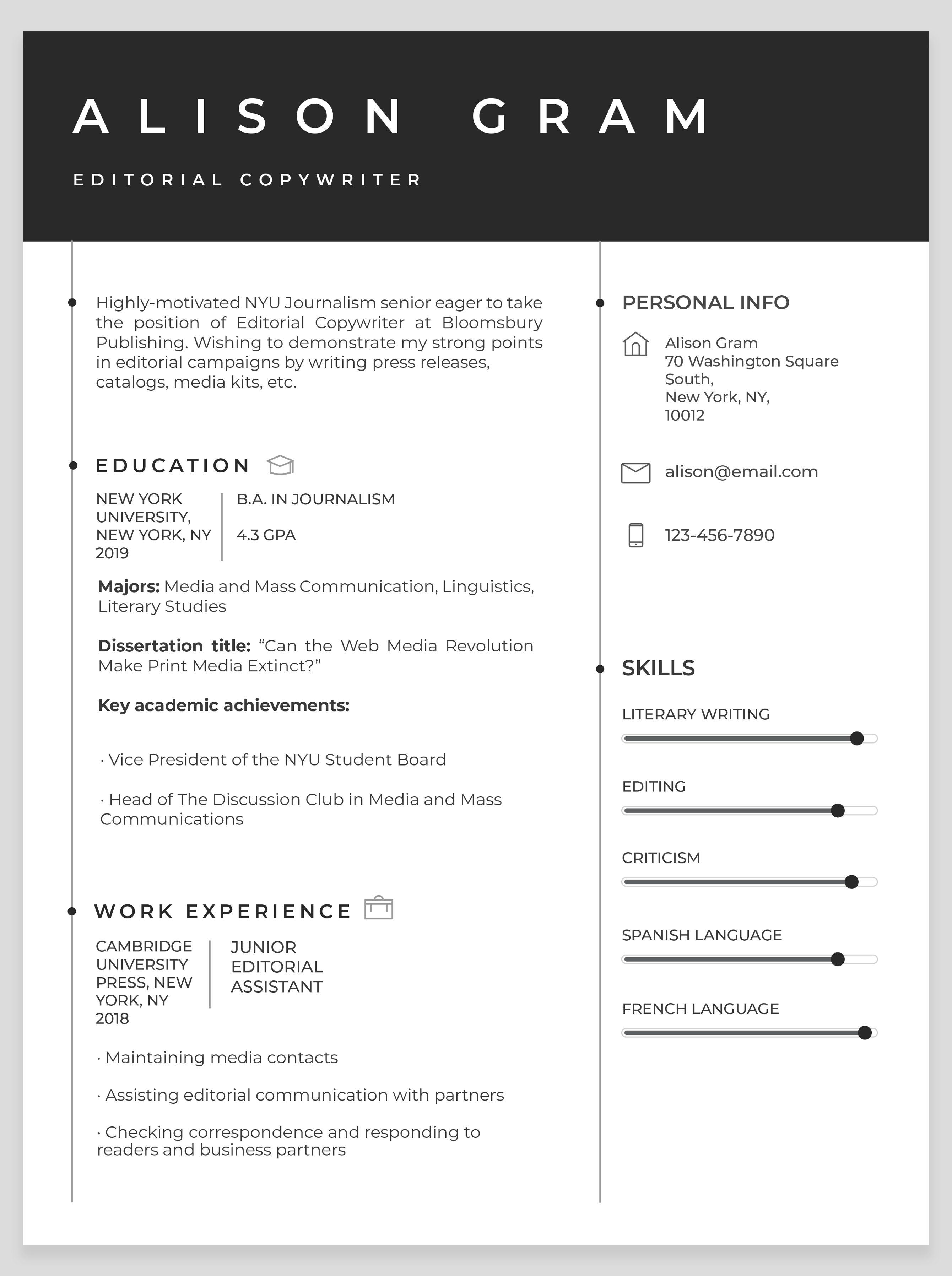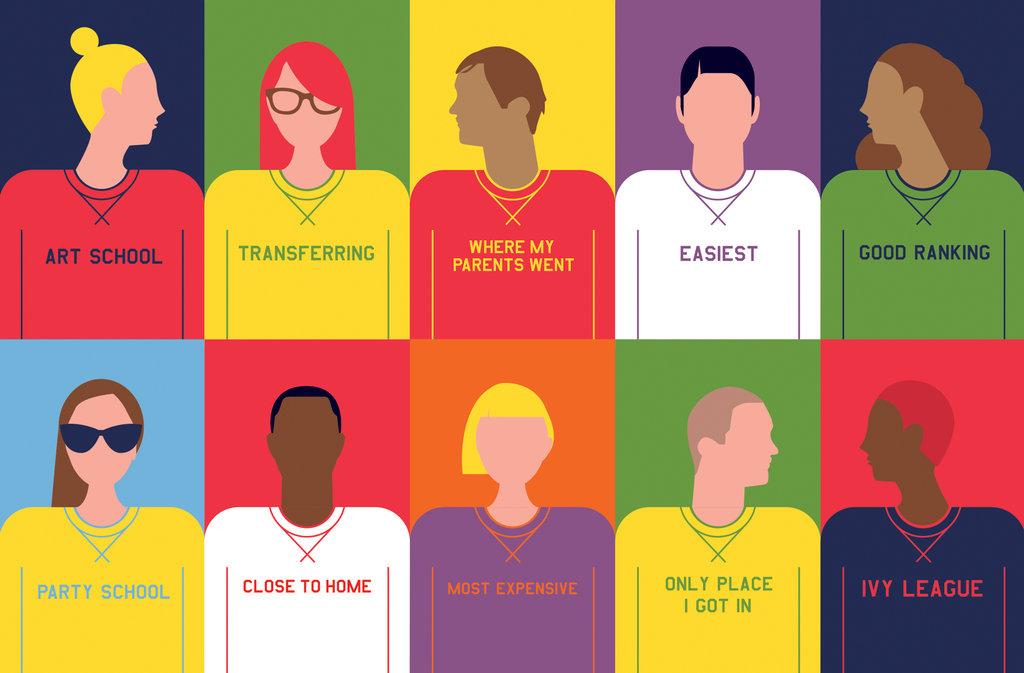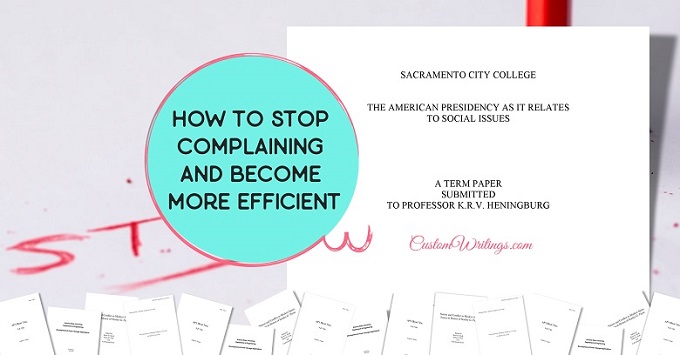Whether you are approaching graduation or only starting your college studies, you probably need a job. And if you search for a good place to start your employment or to continue your learning, you need an excellent resume accompanied with a great cover letter. It is not hard to make an impressive CV when you already have plenty of professional achievements, but usually, this is not the case for a college graduate. However modest your current working profile might be, you need to make the best of it in your resume. In this post, I will give you some tips on how to make a nice one as a student. I will also include a resume template to make this task simpler.
A clear visual makes it successful
While you are thinking so hard about what to put in your resume, I would suggest that most employers hardly care about it. Human resources staff have seen enough resumes of different quality, and they are unlikely to pay more than 10 seconds of their attention to your piece of writing. You know about this now, and your task is to catch an employer’s attention immediately. You can do this by using a professional resume template, which you can find in online photo editors like Canva.
Win your employer’s attention by inserting visuals in your CV. Even if you are not applying for a position in design, your CV format must look user-friendly. In other words, it must be easily readable and conveniently structured. If you search for CV examples on the web, you will notice that they are not long, boring lists of achievements.
How to make the structure of your resume comprehensible
Any resume has a similar structure: contact information, education, work experience, skills, and certificates. Many students add hobbies and interests or their volunteering practice to their CV, as everyone has some experience in extracurricular activities. I recommend you to add objectives to your resume and to put them in the first section. In a couple of sentences, try to introduce yourself and mention the position you are applying for.
As the general structure of your resume is predictable, now it’s time to make this skeleton look good. Put every section into a separate block. Combine one vertical and several horizontal blocks in your resume. Make every block visible and readable. Mind that different blocks shouldn’t conflict with each other. Though making your CV visual may sound too complicated at this point, it can be nice and easy in a free template. This is perhaps the best resume format I can think of. I’m sure it will give you a competitive advantage in the eyes of your employer.
A couple more tips on formatting your resume
- Use simple readable fonts such as Arial for your CV
- Choose a font size of 11-12, which is not too small and not too large
- Make headings for your sections either bold or capitalized
- Save your resume in different text formats in case your employer does not like Word or will not accept a PDF

Why put an objective in your resume?
Perhaps, this is the part you never did before. An objective is a couple of sentences placed right below your contact details explaining to the employer why you are handing this resume for job. The purpose of this section is not only to put you in the best light but also to show how your employer will benefit from hiring you.
Ex. Highly-motivated NYU Journalism senior eager to take the position of Editorial Copywriter at Bloomsbury Publishing. Wishing to demonstrate my strong points in editorial campaigns by writing press releases, catalogs, media kits, etc.
Here, you can mention your education, the position you are applying for, and the duties you are willing to take on. Do not put too much information in your objective—just mention the most important things. Many employers can get all the information they need from this short paragraph and not waste their time reading your whole resume.
Describe your education consistently
This one will not be tough for any student. While writing about your education, mention your degree, the name of the institution, graduation date (past or future), and your major. These are the basic facts every student can provide. To make this section look more impressive, also add a few titles of relevant coursework and mention your key academic achievements. I’m sure you have had some interesting experiences in academics. Check out this education section in the following CV sample:
B.A. in Journalism
New York University, New York, NY, 2019
4.3 GPA
Majors: Media and Mass Communication, Linguistics, Literary Studies.
Dissertation title: “Can the Web Media Revolution Make Print Media Extinct?”
Key academic achievements:
- Vice President of the NYU Student Board, 2017-2018
- Head of The Discussion Club in Media and Mass Communications, 2018-2019
This is how you can make a decent education section even if you do not have many achievements. Think of what you’ve accomplished so far and be confident about your professional skills.
What about work experience?
If you believe you do not have any such experience yet, think again. An average student comes through a part-time job, an internship, or freelance work during his or her college years. So, you can easily turn any of these past activities into your work experience. No employer will expect a student to hand in a resume with solid professional history. But all of them need at least some experience to be mentioned in your resume. Here is what can be done:
Junior Editorial Assistant,
Cambridge University Press, New York, NY, 2018
- Maintaining media contacts
- Assisting editorial communication with partners
- Checking correspondence and responding to readers and business partners
Do not forget to include skills in your CV
Another important part of any resume or CV, professional skills should be mentioned along with your personal information. I suggest merging these two sections into a separate vertical block. First, it will make your skills more distinct, and second, it will not interfere with your education and work experience. Mention only professional skills relevant to the position you are applying for. If you know any foreign languages, add them to this list as well. Here is a version of personal information combined with skills:
PERSONAL INFO
Alison Gram
70 Washington Square South,
New York, NY, 10012
alison@email.com
123-456-7890
SKILLS
Literary writing – Advanced
Editing – Advanced
Criticism – Advanced
Spanish language – Advanced
French language – Advanced

Photo by Helloquence on Unsplash
A few more words about writing a resume that wins
When there is so much information to put on your CV, my advice is to include only the most important details. This way you can easily complete this list yourself in almost no time.
Another good idea is to ask for resume help online so that experts can write a perfect one for you. It is cheap and safe. Find a couple of resume writing services and ask about their prices and deadlines. Inquiries are usually free, so you will not spend a fortune paying someone for your CV. Professional resume writers can use other secrets of winning your employer’s attention. Whichever way you choose, may your dream job give you bright opportunities and a pleasant salary!




